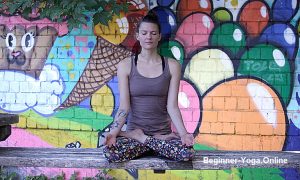No time to read this? Click here to receive this post as a PDF

A Beginner’s Guide to 8 Major Styles of Yoga

Skimming the class schedule at your gym for a good yoga class can be a real exercise in confusion. How can you tell the difference between Anusara and Ashtanga? Or hot yoga and hatha? Below is a cheat sheet to the many different styles of yoga being taught today. May it help you find your way to a class you love.
1. Anusara
Developed by American yogi John Friend in 1997, Anusara yoga is a relative newcomer to the yoga world. Based on the belief that we’re all filled with an intrinsic goodness, Anusara seeks to use the physical practice of yoga to help students open their hearts, experience grace, and let their inner goodness shine through. Classes, which are specifically sequenced by the teacher to explore one of Friend’s Universal Principles of Alignment, are rigorous for the body and the mind.
2. Ashtanga
Ashtanga is based on ancient yoga teachings, but it was popularized and brought to the West by K. Pattabhi Jois (pronounced “pah-tah-bee joyce”) in the 1970s. It’s a rigorous style of yoga that follows a specific sequence of postures and is similar to vinyasa yoga, as each style links every movement to a breath. The difference is that Ashtanga always performs the exact same poses in the exact same order. This is a sweaty, physically demanding practice, so make sure to bring your trusty yoga mat towel.
3. Bikram
About 30 years ago, Bikram Choudhury developed this school of yoga where classes are held in artificially heated rooms. In a Bikram class, you will sweat like never before as you work your way through a series of 26 poses. Like Ashtanga, a Bikram class always follows the same sequence, although a Bikram sequence is different from an ashtanga sequence. Bikram is somewhat controversial, as Choudhury trademarked his sequence and has sued studios who call themselves Bikram, but don’t teach the poses exactly the way he says they should. It’s also wildly popular, making it one of the easiest classes to find. Due to the heated conditions of the studio, don’t forget to bring a water bottle!
4. Hatha
Hatha yoga is a generic term that refers to any type of yoga that teaches physical postures. Nearly every type of yoga class taught in the West is Hatha yoga. When a class is marketed as Hatha, it generally means that you will get a gentle introduction to the most basic yoga postures. You probably won’t work up a sweat in a hatha yoga class, but you should end up leaving class feeling longer, looser, and more relaxed.
5. Hot Yoga
Largely the same thing as Bikram. Generally, the only difference between Bikram and hot yoga is that the hot yoga studio deviates from Bikram’s sequence in some small way, and so they must call themselves by another name. The room will be heated and you will sweat buckets, so check out our mats and accessories specifically designed for hot yoga classes.
6. Iyengar
Iyengar yoga was developed and popularized by B.K.S. Iyengar (pronounced “eye-yen-gar”). Iyengar is a very meticulous style of yoga, with utmost attention paid to finding the proper alignment in a pose. In order to help each student find the proper alignment, an Iyengar studio will stock a wide array of yoga props — blocks, blankets, straps, chairs and bolsters are all common. There isn’t a lot of jumping around in Iyengar classes, so you won’t get your heart rate up, but you’ll be amazed to discover how physically and mentally challenging it is to stay put. Iyengar teachers must undergo a comprehensive training — if you have an injury or chronic condition, Iyengar is probably your best choice to ensure you get the knowledgeable instruction you need. For a speedier recovery from an injury or to relieve sore, tight muscles, check out our line of recover products.
7. Restorative
Restorative yoga is a delicious way to relax and soothe frayed nerves. Also described as yin yoga, restorative classes use bolsters, blankets, and blocks to prop students into passive poses so the body can experience the benefits of a pose without having to exert any effort. A good restorative class is more rejuvenating than a nap. Studios and gyms often offer them on Friday nights, when just about everyone could use some profound rest.
8. Vinyasa
Vinyasa (pronounced “vin-yah-sah”) is a Sanskrit word for a phrase that roughly translates as “to place in a special way,” referring—in hatha yoga—to a sequence of poses. Vinyasa classes are known for their fluid, movement-intensive practices. Vinyasa teachers sequence their classes to smoothly transition from pose to pose, with the intention of linking breath to movement, and often play music to keep things lively. The intensity of the practice is similar to Ashtanga, but no two vinyasa classes are the same. If you hate routine and love to test your physical limits, vinyasa may be just your ticket.
Also in Discover
Do you need a Spring Clean?
5 Benefits of Doga for You and Your Dog
https://www.gaiam.com/blogs/discover/a-beginners-guide-to-8-major-styles-of-yoga
On – 05 Sep, 2017 By Gaiam






